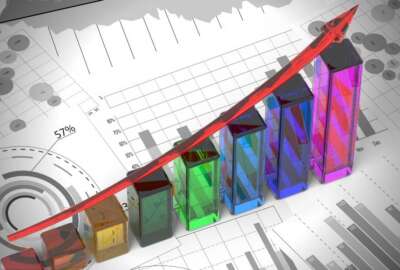
Insight by T-Mobile for Government
Healthcare shows early promise of IoT paired with 5G
Get ready for the future as agencies begin pairing Internet of Things and 5G. Healthcare offers an early glimpse of the potential to take advantage of a lot of...
“5G and IoT can certainly bring healthcare much closer to home and make the transition between traditional facilities and the home environment much more seamless,” said Mark McDiarmid, Senior Vice President for Radio Network Engineering and Development at T-Mobile.
T-Mobile has worked closely with the U. S. Department of Veterans Affairs (VA), which has medical centers in cities nationwide, to improve telehealth experiences and implement IoT solutions to help make care more efficient. “The COVID-19 pandemic has increased interest in both areas,” McDiarmid said.
Dr. Leonie Heyworth, VA Telehealth Deputy Director for Clinical Services shared, “Telehealth has continued delivery of high-quality outpatient VA services in the context of pandemic-related social distancing guidelines. In FY 2021, telehealth continued to expand to over 1.9 million Veterans who received more than 9.5 million video visits to their homes, an increase of more than 146% when compared to FY 2020. Since FY 2019, VA video visits to Veterans in their homes or on mobile devices have increased by more than 3100%”.
Next-gen healthcare with 5G
“The potential to build on the success of such programs has sparked collaborative research and new projects,” added Pat Watkins, Vice President of Partner Solutions and IoT at T-Mobile.
This collaboration might involve providing equipment to patients for use in their homes with sensors that relay data back to clinicians. Additionally, through the use of sensors and fast networks, healthcare providers can potentially reduce many of the manual and repetitive tasks that take place at medical facilities.
IoT can help make sure that the facility is ready for both patients and providers – bed and equipment status can be tracked through information shared via sensors. That information no longer needs to be tracked down by someone and then provided to someone else. “With 5G, the ability to add more sensors and transmit more information in real time will expand the potential to provide more efficient healthcare services,” Watkins said.
With the right network and IoT technology, both government organizations and medical facilities can be more proactive. By using sensor data to precisely identify when equipment might be ready for maintenance or replacement, predictive analytics can reduce unplanned equipment downtime. Proactive use of data can extend directly to patient care, too. For example, a patient’s health stats can be shared from equipment in an ambulance directly with the receiving care team in the emergency room, providing vital information when every second counts.
IoT and 5G beyond healthcare
While leveraging sensors for fleet management was one of the earliest IoT focus areas for agencies across all levels of government, there are even more spaces where IoT and 5G innovation can have a big impact, such as agriculture, sustainability, and city management.
T-Mobile is partnering closely with agencies and state and local governments as they unlock new ways to innovate through the power of an advanced 5G network paired with IoT solutions.
For example, Snohomish County, the 5G Open Innovation Lab and T-Mobile partners have come together to create a state-of-the-art agriculture technology field lab on two farms in rural Washington. The Food Resiliency Project brings farmers, distributors, and technology companies together to transform the agriculture industry.
Using similar innovation, dairy manufacturers have the ability to track progress throughout the entire supply chain. Starting with cows directly on the farm, sensors can help track individual batches of milk at factories and distribution to wholesalers. Beyond healthcare and agriculture, local governments can also use IoT solutions to better manage waste, monitor traffic, and communicate more effectively with their communities.
“Making the most of evolving IoT and 5G capabilities will hinge on government and industry working closely together,” Watkins says. “It’s going to take a lot of collaboration between all of us.”
How can 5G networks help agencies respond when disaster strikes? Read more now.
Copyright © 2025 Federal News Network. All rights reserved. This website is not intended for users located within the European Economic Area.
Related Stories

Is it time to throw in the towel on federal data privacy legislation?

Maintaining compliance in government agencies with rich text editors
Featured guests
-

Mark McDiarmid
SVP, Radio Network Engineering and Development, T-Mobile USA
-

Patricia Watkins
Vice President, IoT and Partner Solutions, T-Mobile for Business
-

Vanessa Roberts
Editor, Custom Content, WTOP and Federal News Network
Upcoming Events
Related Stories
Top Stories

Mark McDiarmid
SVP, Radio Network Engineering and Development, T-Mobile USA
Mark McDiarmid has 30 years of experience in the wireless industry in both domestic and international operations. These experiences have developed Mark’s knowledge and expertise of systems engineering, business planning and technology development. Previously, Mark played a key role in the development of several new businesses that provided innovative products and services to the wireless industry.
Currently, Mark serves as Senior Vice President, Radio Network Engineering and Development for T-Mobile US, where he leads several teams of industry-leading engineers focused on creating robust, operationally-efficient, and economic radio network designs. His responsibilities include strategy and development of radio spectrum and access network technology, radio system design and device technology. Recently, Mark was responsible for defining the evolution and system design of T-Mobile US’s HSPA+ and LTE mobile broadband network including the design and operationalization of new radio network transport solutions based on IP and Ethernet.
Mark earned a Higher National Certificate in Electrical and Electronic Engineering from Llanelli Technical College in 1987. In 1990, Mark was awarded a Bachelor of Engineering degree from University College Swansea after completing a thesis specializing in radio frequency design and UHF antenna systems.

Patricia Watkins
Vice President, IoT and Partner Solutions, T-Mobile for Business
As Vice President of IoT Sales and Partner Solutions at T-Mobile, Pat leads a results driven team specializing in delivering solution-based opportunities that drive profitable growth and strategic change for both the company and our customers.
Pat has a proven track record for setting a vision, gaining buy-in among advocates to lead disruptive initiatives that ignite profitable growth and drive strategic change. She and her dynamic team of IoT experts and Channel Partners are committed to delivering game-changing outcomes through technology-driven innovation and world-class experiences
for our customers.
As a 16-year veteran of T-Mobile/Sprint, Pat brings a wealth of knowledge in the evolution of the Internet of Things (IoT). From previously leading Sprint’s award-winning automotive connected vehicle business, to being recognized as a Top Woman of M2M by Connected World Magazine, she is a leader committed to making a positive impact for our customers. Pat was recently recognized with an award for Channel Partner Excellence 2021, which honors executives for their vision, innovation, and advocacy of the indirect channels.
Pat holds a Bachelor of Science from Michigan State University. Today, she resides in sunny Southern California with her husband.

Vanessa Roberts
Editor, Custom Content, WTOP and Federal News Network
Vanessa Roberts crafts content for custom programs at Federal News Network and WTOP. A tech and government junkie, she’s been finding and telling B2B, government and technology stories in the nation’s capital since the era of the “sneakernet” — including for numerous brands. Vanessa has a master’s from the Columbia Graduate School of Journalism.



